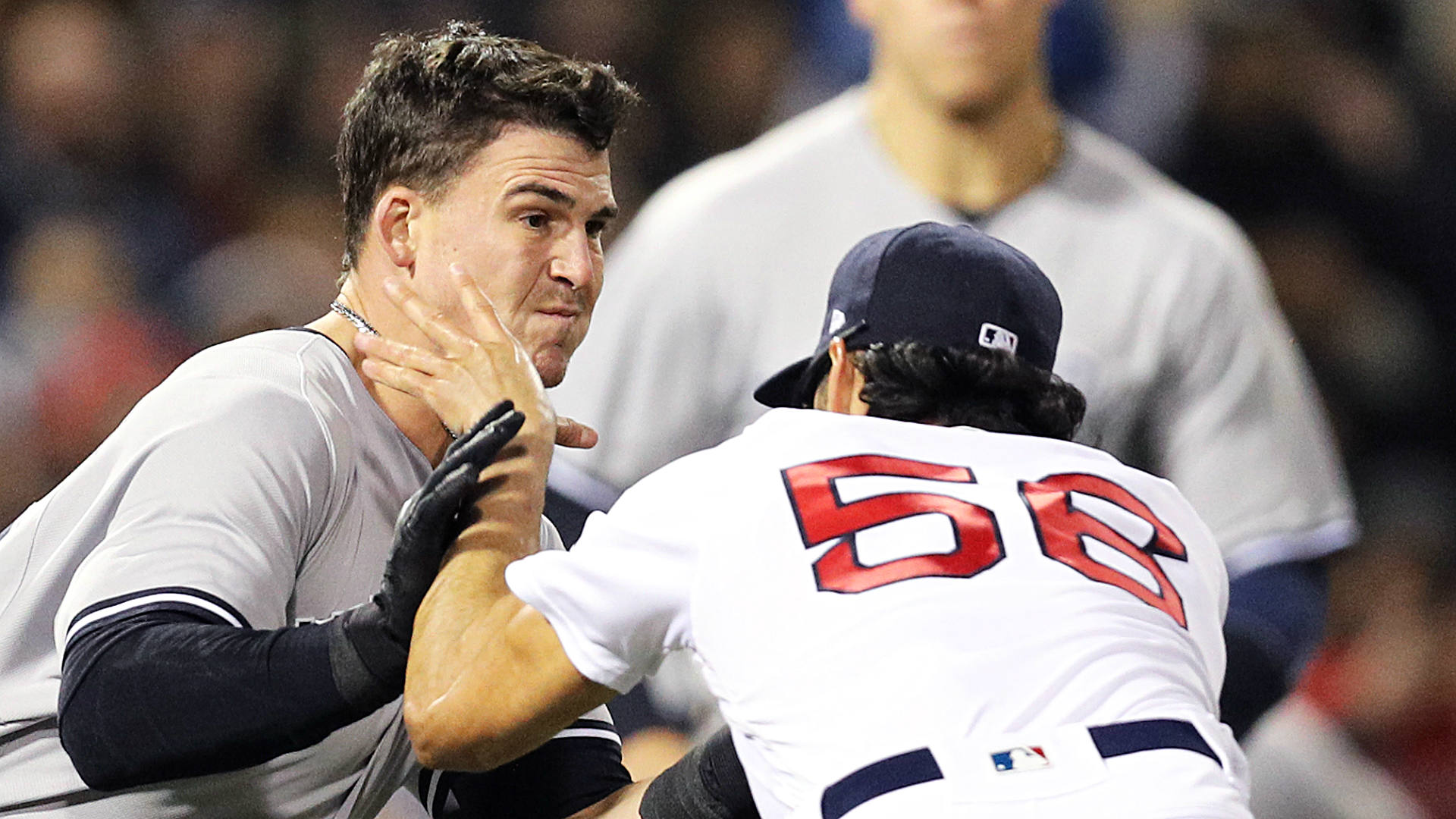On Dec. 16, 2006, the Knicks and Nuggets got into an all-out bench-clearing brawl at Madison Square Garden. Carmelo Anthony — then on the Nuggets — was suspended for 15 games, while his teammate J.R. Smith and Knicks guard Nate Robinson were each suspended for 10. Other scattered suspensions were doled out too.
As Michael Wilbon pointed out in a column following the incident, the brawl “wasn’t that big a deal.” Yet, the NBA still came down with the mandatory punishments in response.
The NBA was different then. The league was just two years removed from the infamous Malice in the Palace — a 2004 brawl between Pacers and Pistons players and fans. Players were told they’d be punished if they didn’t remain on the sideline during on-court scuffles, connected on any blows or showed up to the arena without a suit and tie on.
The league was in the middle of an image crisis in which players were perceived as “thugs” and then-commissioner David Stern was working hard to change that perception.
While the fights haven’t gone away, they’ve certainly calmed down in today’s game.
Ironically enough, these issues have even circled back to the point where basketball players are seen as “fake tough” because they don’t actually exchange blows — and why would they? Players will get fined $50,000 and could be suspended for larger percentages of the season for even throwing a semblance of a punch.
MLB Power Rankings: Reigning World Series champs Astros occupy top spot
Baseball’s rules are a little bit different.
Joe Kelly Hall of Fam inductee.
— 617 ESPN (@617espn) April 12, 2018
April 11th, 2018 pic.twitter.com/oJZGEF3Cfp
I found myself not just watching the Yankees and Red Sox game on Wednesday, but also jumping out of my seat when their bench-clearing fight began.
For those somehow unaware of what happened, Yankees first baseman Tyler Austin was hit in the ribs with a 98 mph fastball from Red Sox pitcher Joe Kelly — presumably in retribution for Austin’s studs-up slide into second base. Austin, unhappy with getting hit, charged the mound and both team’s benches cleared out to either participate in, or break up, the fight.
I wanted to check Twitter to see how folks were reacting. The range of comments was about what one would expect: Kelly won, Austin won or baseball fights are an unfortunate byproduct of rampant toxic masculinity in the sport, but they’re still awesome.
The most interesting tweet, however, didn’t come from an individual — it came from the MLB account.
Benches clear, punches thrown in Yankees-Red Sox after Tyler Austin is hit by a pitch from Joe Kelly. pic.twitter.com/wvqoak8QMV
— MLB (@MLB) April 12, 2018
Let’s ignore for a moment that MLB highlights and attempts to profit from actions that are usually punished by the league office and that cost players actual dollars. Austin, Kelly and every single player involved in the brawl went into the scrum like rebels without causes. What gives players of the sport with the least amount of physical contact the courage to sprint into these altercations?
Simple: the rules.
MLB doesn’t have specific punishments for brawls like it does for things like PED use, but it still hands them out nonetheless. This fight might result in a two or three-game suspension — but they can sometime reach up to eight games if you have a history of fighting and connect on a right hook. Kelly and Austin received six and five-game suspensions, respectively, on Thursday.
This wasn’t even the first fight of the day. Earlier, the Rockies’ Nolan Arenado charged charged the mound after Padres pitcher Luis Perdomo threw behind him — leading to a bench-clearing brawl.
Benches clear, punches thrown in Padres-Rockies game with Nolan Arenado and Luis Perdomo in the center of it. pic.twitter.com/6cItcDc8Td
— MLB (@MLB) April 11, 2018
Five players were ejected in total from that scuffle, but it’s unlikely any will face a harsh punishment.
FOSTER: Shohei Ohtani is the real deal, so we should go ahead and declare it
The common denominator between these two fights is how they both stemmed from a likely-team-sanctioned assault of another player — which throwing a baseball 90 mph or more at someone essentially is.
Yet, none of the players are deemed “thugs,” “criminals” or “violent.” Baseball isn’t working to make sure the images of these brawls are limited in circulation to protect its image. In fact, these brawls are celebrated — especially the Yankees vs. Red Sox one.
“The rivalry is back,” some tweeted in excitement.
“Greatest rivalry in sports,” others tweet.
So why does one get special treatment over the other?
Does basketball get less leeway than baseball because of the former's perception as a "black sport?" It certainly doesn't help that baseball is seen by many as a "white" sport. Though, interestingly, MLB announced this week that it has its highest number of black players (8.4 percent) since 2012.
Other sports with similar, or more white, demographics run into similar privileged perceptions. Hockey’s fighting culture is ingrained in the sport — and punished with in-game timeouts — and NASCAR will promote off-track fistfights between drivers before big races.
There's also the argument that baseball's fights aren't really fights, just a group of angry players pushing and shoving and almost punching someone. That could be the case for the Padres vs. Rockies scuffle, but it certainly looked like Kelly was trying to connect his punches — and Tyler Austin looked like he got a piece in too.
JOE KELLY DONKEY PUNCH TO THE BACK OF THE HEAD! FIRE ME UP! pic.twitter.com/tu0dIwGqpQ
— Ben Porter (@Ben13Porter) April 12, 2018
Tyler Austin for Monument Park 🐐 pic.twitter.com/9PtMcIgxms
— nyygirl333 (@nyygirl333) April 12, 2018
The same things are said about basketball and, again, there's a discrepancy in fan reaction.
At least they throw punches unlike basketball with the hold me back approach.
— Jose Vega🇵🇷🇺🇸🗽🚫NRA🌊 (@javunfiltered) April 11, 2018
Sure, the two sports are incredibly different and have different fanbases — with some crossover — but ultimately the brawls that come from each sport are often instigated by the same thing: an intentional physical attack. The outside reactions, however, vary.
The societal influence of sports is tough to ignore. How people see individuals on a field or court could extend to how those individuals are seen in everyday life. If these double-standards and discrepancies that exist in sports culture don’t get pointed out in this scenario, they certainly won’t get noticed in broader contexts.

